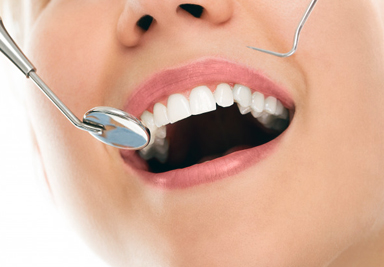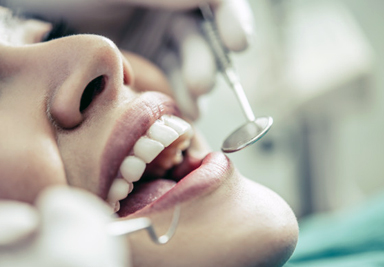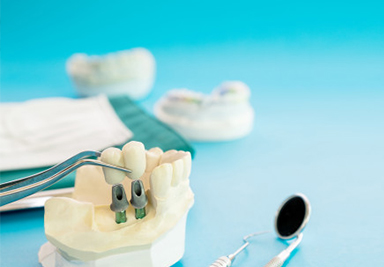


Dental Cleaning is the removal of dental plaque and tartar (calculus) which builds up on the teeth. The tools used are tooth scrapers, manual or ultrasonic, and special toothbrushes.
This procedure is important to prevent gum disease (periodontal disease) and its consequences over the tissues surrounding the teeth (gum, periodontal membrane and bone).
It should be done every 6 months in the dental office and the patient should get into a regular habit of good oral hygiene.
Root planing, is a healing procedure for periodontal disease. During this procedure, the teeth are planed and the periodontal pockets are cleaned in order to prevent the disease from becoming severe.

Dental restoring is the result of the techniques and procedures applied to restore the shape of a damaged or decaying tooth. The restoring might be: Direct: these are performed directly in the patient's mouth, eg. Amalgams, composites, glass ionomer. Indirect: These procedures include laboratory work, thus various visits to the office will be needed and the costs are often higher, eg. inlays and onlays, labial veneers. - Dental Amalgam: it contains a mixture of mercury with at least one other metal such as silver, copper, tin or zinc, from which a solid, safe and stable substance is obtained. Useful mainly for obturation of posterior teeth. - Photopolymerized Composites: or composite resins are synthetic material composed of: a resin matrix and a filler of ceramic particles which micromechanically adhere to the surface of dental enamel and forge through a photopolymerization system that allows full hardening of the material. Advantages: Almost the same colour as natural teeth. Reduced wear and tear on the tooth. Higher elasticity than with amalgam restoration. - Glass ionomer cements: these materials are based on the reaction of silicate glass powder and polyalkenoic acid. They release fluoride for a relatively long period which prevents secondary carious lesions from appearing. It is used for cavity obturation when direct occlusal forces might cause damage. - Labial veneers: paper thin porcelain or composite resin layer placed over the top of the front teeth. Used to fill gaps between front teeth (disastema), over small teeth (microdontics), malformations (conical teeth), carious or damaged teeth, stained teeth, slightly rotated teeth. The main requirement to get labial veneer restoration is the existence of a healthy enamel to promote bonding to the enamel tooth surface. - Inlays and Onlays: An inlay is an indirect restoration (filling) consisting of a solid substance (as gold or porcelain) fitted to a cavity in a tooth and cemented into place. An onlay is the same as an inlay, except that it extends to replace a cusp. - Crowns: They are onlays which completely cover all surfaces of a damaged tooth. They are also used to restore tooth natural shape, length and/or colour.

It is the procedure by which the swollen pulp, infected or dead, is removed, and following the root canal or canals are filled with a special filling cement and gutta-percha. This treatment is intended to prevent extractions. If root canal treatment (RCT) is not carried out, the tooth might need to be replaced by an implant or dental bridge.
Steps in the treatment:
- Opening: consists of drilling the crown until reaching the pulp chamber and exposing the entrance to root canals.
- Instrumentation: the pulp is removed with special equipment and the root canal is cleaned and shaped ready for the filling. The area is cleaned persistently with aseptic liquid, which guarantees the success in the treatment.
- Obturation: the aim of this step is achieving the apical seal of the root canal (in the tip of each root there is a hole through which the tooth is nurtured by the neurovascular bundle). The procedure is performed with special cement and gutta-percha. There might be further complications if the apical seal in not obtained.